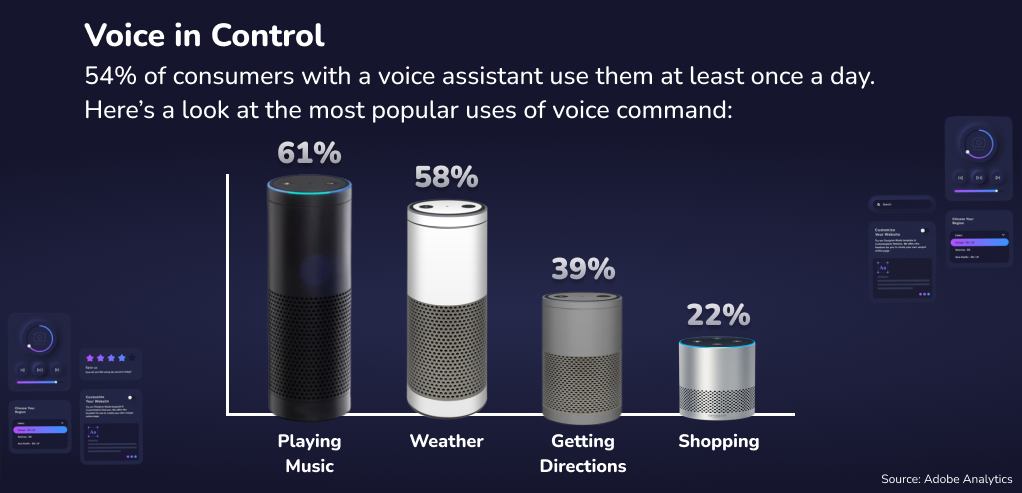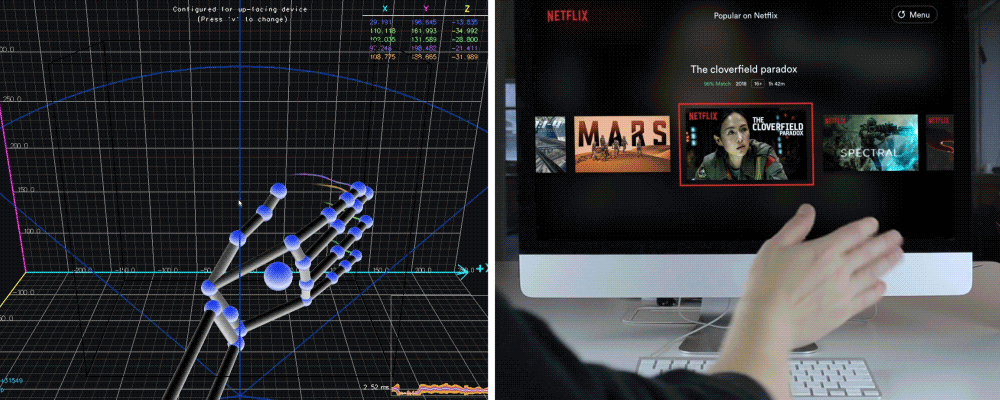In today’s world of rapidly advancing technology, it can be difficult to keep up with all of the latest trends in user experience (UX) and user interface (UI). But in 2023, we can expect a revolution in UX design as businesses focus on providing their customers with intuitive interfaces and innovative interaction methods that meet their needs faster than ever before.
Whether you are a designer or simply someone who is interested in keeping up with emerging trends in user-centered design, this article will help you stay ahead of the curve by exploring some of the TOP UI/UX trends for 2023.
The rise of voice-activated devices and smart assistants.
With the ever evolving and rapidly expanding world of technology, we are seeing new trends emerge in user experience design that will revolutionize how users interact with digital interfaces. One of the top trends to look out for is voice-activated devices and smart assistants

Voice assistants like Amazon Alexa, Google Assistant, and Siri have been growing in popularity over the past few years. These digital helpers are not only convenient for consumers, but they also offer immense potential for businesses looking to improve their user experiences. For example, many companies are now incorporating voice assistants into their products or services to make it easier for users to engage with them.
Voice-activated devices are becoming more commonplace in homes and offices, and smart assistants are being used in an ever-increasing number of industries ranging from healthcare to hospitality. As the technology continues to evolve, it’s likely that voice assistants will become even more integral to the way we live and work. Hence, designers will need to adapt to this change.
Innovative new methods for interacting with digital interfaces.
With the rapid growth of voice-activated devices and smart assistants, designers are constantly striving to find innovative new methods for interacting with digital interfaces. Some of the most exciting advancements in this area include gesture control, virtual reality (VR), and eye tracking.
Gesture control is a cutting-edge technology that allows users to interact with digital interfaces using simple hand movements. This not only reduces friction for the user but also opens up endless possibilities for creative design. For example, many gaming companies are now incorporating gesture controls into their products to create more immersive experiences.

An example of managing the interface using hand gestures, developed by Chapps Future Laboratory
Gesture control can also be used in more practical applications, such as controlling home automation systems or navigating complex websites. In the future, this technology is likely to become even more ubiquitous as we find new and innovative ways to put it to use.
Another emerging trend in UX design is VR, which allows users to interact with digital interfaces in entirely new ways. With VR headsets becoming increasingly more affordable, we can
Advances in machine learning and artificial intelligence enable more personalized experiences.
The world of user experience is rapidly evolving, and with it, many TOP UI/UX trends for 2023. One such trend is the growing use of machine learning and artificial intelligence to create more personalized experiences for users.
With advances in these cutting-edge technologies, designers are now able to customize the content and interactions that users see on their screens based on their individual preferences and behaviors. This allows them to deliver more customized, engaging experiences that are tailored specifically to each user’s unique needs and preferences.
Below are the top 4 ways to leverage AI/ML for a better user experience.
1. Intelligent Algorithms
Artificial Intelligence has created an innovative system that can process information about app users seamlessly and apply changes in ways to optimize your design. In addition, AI continues learning by using its own algorithms which help developers create a better experience than ever before for mobile apps with engaging content or services
2. Advanced Search
Machine learning is a field of computer science that allows for the optimization and improvement of search results. With this technology integrated into apps on mobile devices as well as desktop computer websites; you can be sure that we will always have a way to find what is relevant in seconds! Machine learning algorithms are constantly being refined and improved, making the user experience more efficient and streamlined. As machine learning technology becomes more advanced, the potential applications are endless. With the power of machine learning, we can make finding what we need online easier than ever before. Thanks, machine learning! We couldn’t do it without you.
3. Deep Learning
Deep learning technology analyzes thousands of different variations and then generates a button or graphic that will better connect with users based on behavioral data insights.
Certain aspects, such as creating buttons for an application that are more likely to appeal than others; all rely heavily upon inputting large amounts of personal information about yourself into one system so it is not just guessing what you want to be done next but instead using this insightfulness towards improving certain parts within apps like navigation menus where there may be too many choices available at first glance.
4. Personalized Ads
With the right marketing, you can increase your ROI on ads by showing them to audiences that are likely interested in what’s being advertised.
This is where machine learning comes into play – it gauges an app’s audience and reaches out with personalized messaging for just those individuals so as not only to maximize credibility but also to ensure a hassle-free experience from start to finish!
Other TOP UI/UX trends for 2023 include new interfaces that leverage voice recognition software, interactive 3D environments, and immersive touchscreens. These innovations allow users to seamlessly interact with digital content in ways that feel
Increased focus on user research and testing to ensure optimal usability and accessibility.
It can be difficult for UX professionals to stay up-to-date on emerging trends. However, in recent years, there has been a growing emphasis on user research and testing in order to ensure optimal usability and accessibility.
At the forefront of this trend is an increased focus on iterative design cycles that incorporate user feedback at every stage of development. By conducting qualitative and quantitative research throughout the product lifecycle, designers are better able to identify pain points and areas for improvement, leading to more intuitive and engaging user interfaces. Another key driver of UI/UX innovation is the use of new technologies like virtual reality (VR) and augmented reality (AR). With the advent of these immersive platforms, designers are able to create rich, immersive user experiences that go beyond traditional screen-based interfaces.
By embracing these trends and staying attuned to user needs and preferences, designers will be well-positioned to create next-generation user experiences that revolutionize how we interact with technology.
The emergence of new tools, platforms, and frameworks to help designers create better UX designs more efficiently.
As the landscape of user experience (UX) design continues to evolve, so too do the tools and platforms available to designers. With new technologies emerging at a rapid pace, it can be challenging for UX professionals to keep up with the latest trends and best practices.
One of the top UI/UX trends for 2023 is the emergence of new tools, platforms, and frameworks that make it easier than ever before for designers to create better user experiences. These innovations range from powerful prototyping software that simplifies wireframing and layout design to analytics dashboards that help track user engagement metrics in real-time.
Another key trend is the rise of AI-powered design assistants that offer personalized recommendations based on data collected from countless interactions with users. This type of technology helps designers to create more intuitive, user-friendly interfaces that are tailored to meet the unique needs of each individual user.
Overall, it is clear that the future of UX design is bright, as new technologies continue to emerge and transform the way we interact with digital products and services. By embracing these top UI/UX trends for 2023
The world of UI/UX design is always changing, and it can be difficult to keep up with the latest trends. But by keeping an eye on the trends that are emerging for 2023, you will be ahead of the curve and able to provide your customers with the best possible experience. What are you most looking forward to in terms of UI/UX design in 2023?
Let’s Build Digital Excellence Together










